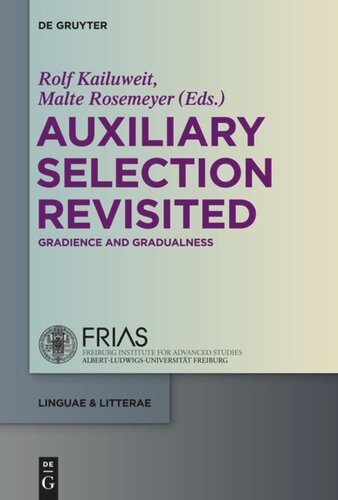

Most ebook files are in PDF format, so you can easily read them using various software such as Foxit Reader or directly on the Google Chrome browser.
Some ebook files are released by publishers in other formats such as .awz, .mobi, .epub, .fb2, etc. You may need to install specific software to read these formats on mobile/PC, such as Calibre.
Please read the tutorial at this link: https://ebookbell.com/faq
We offer FREE conversion to the popular formats you request; however, this may take some time. Therefore, right after payment, please email us, and we will try to provide the service as quickly as possible.
For some exceptional file formats or broken links (if any), please refrain from opening any disputes. Instead, email us first, and we will try to assist within a maximum of 6 hours.
EbookBell Team

4.3
8 reviewsA central debate about the description of auxiliary selection concerns the regularity of auxiliary selection from a typological perspective. Thus, studies of auxiliary selection have both stressed the fact that certain recurrent parameters are highly relevant to the description of auxiliary selection, whereas other studies demonstrate significant differences in auxiliary selection systems.
By integrating the synchronic and diachronic levels of linguistic description, the papers in the present volume work towards a framework that explains these contradictory findings. They discuss the role of semantic and syntactic constraints in gradient auxiliary selection, address the question of paradigmaticity of the have-be alternation, and shed light on the mechanisms of the gradual historical change from be- to have-selection.
The volume thus puts forth a row of innovative theoretical and empirical findings from a wide range of typologically diverse European languages that substantially broaden our knowledge about the mechanisms of auxiliary selection systems.